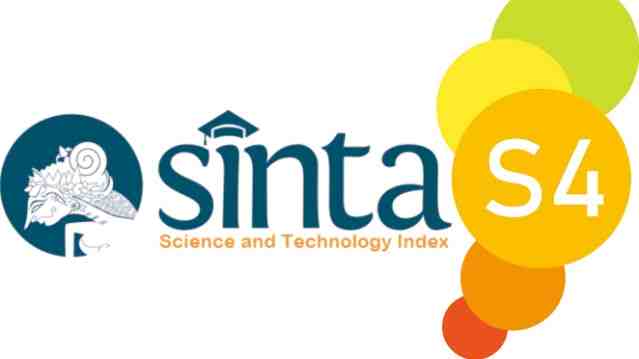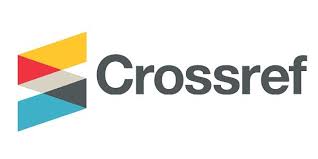PEMANFAATAN LIMBAH TONGKOL JAGUNG DAN GETAH KARET SEBAGAI BAHAN BAKU DALAM PEMBUATAN BIOBRIKET
Abstract
Biomass is a potential source of energy developed as an alternative source of substitute for fossil fuels and can be renewed. One of the fuels derived from biomass is corncob biobriquette waste. Thisstudy aims to determine the characteristics of physical properties (heat value and density) chemical properties (water content, ash content, levels of flying matter, and carbon content) and endurance (stability and strength). This research method was experimental, namely direct observation through the carbonization process and quantitative data measurement. The adhesive used is starch and aquadest with a ratio of 1: 4, to measure the heating value of briquettes using a bomb calorymeter. From the research results of briquettes A, B, and C, it can be seen that the physical properties, chemical properties and durability produced are apparently not much different compared to coal briquettes. The highest heating value produced by coal briquettes is around 6.058,62 cal/g while the heating value in composition A biobriquette is 5.956,21 cal/g, composition B is 5.241,78 cal/g and the lowest heating value is found in composition C biobriquette namely 4,935.91cal/g. The results showed that biobriquette from corn cobs and rubber latex with compositions A and B were still in accordance with SNI.
References
Indonesia Investment. 2018. Produsen Batubara terbesar pada tahun 2016. https://www.indonesiainvestments.com /id/bisnis/komoditas/batubara/item236. 9 April 2020.
Gandhi, AB. 2010. Pengaruh Variasi Jumlah campuran perekat terhadap karakteristik Briket Arang Tongkol Jagung. J. Profesional. Vol.8 No.1 : 1-12.
Arman M, Abdul M, dan Andi. 2017. Produksi Bahan Bakar Alternatif Briket dari Hasil Pirolisis Batubara dan Limbah Biomassa Tongkol Jagung. Jurnal of Chemical Process Engineering. Vol.2 No.2 : 16-21.
International Trade Centre. 2018. Export Potential Map Natural Rubber Latex. <http://exportpotential.intracen.org/#/exporters/gapchart?toMarker=w&market=w&whatMarker=k&what=400110&fromMarker=i>. 26 Februari 2020.
Hamidi N, Wardana, ING dan Sasmito H. 2011. Pengaruh Penambahan Tongkol Jagung Terhadap Performa Pembakaran Bahan Bakar Briket Blotong (Filter Cake). J Rekayasa Mesin. Vol.2 No.2 : 92-97.
Utomo TP, Hasanudin U, dan Suroso, E. 2012. Agroindustri Karet Indonesia: Petani Karet dan Kelembagaan, Proses Pengolahan dan Kinerjanya dan Selayang Pandang Karet Sintetis (Bandung: PT Sarana Tutorial Nurani Sejahtera).
Setiawan, A dan Adriodan, CP. 2012. Pengaruh Komposisi Pembuatan Biobriket Dari Campuran Kulit Kacang Dan Serbuk Gergaji Terhadap Nilai Pembakaran. Jurnal Teknik Kimia. Vol.18 No.2 : 9-16.
Saukani M, Rukun dan Ice. 2019. Pengaruh Jumlah perekat Karet terhadap Kualitas Briket Cangkang Sawit. Jurnal Fisika FLUX. Vol.1 No.1 : 159-62.
Mahmud, N. 2010. Penentuan Nilai Kalor Berbagai Komposisi Bahan Bakar Minyak Nabati (Skripsi: Malang Fakultas Sains dan Teknologi Jurusan Kimia, UIN Maulana Malik Ibrahim).
Nurhudah. 2018. Pembuatan Briket dari Campuran Limbah Kulit Singkong (manihot utilissima) dan Kulit Kapuk (ceiba pentandra l. gaertn) dengan perekat getah pinus (Thesis: UIN Alauddin Makassar).
Fitri N. 2017. Pembuatan Briket Dari Campuran Kulit Kopi (Coffea Arabica) dan Serbuk Gergaji Dengan Menggunakan Getah Pinus (Pinus Merkusii) Sebagai Perekat (Skripsi: Fakultas Sains dan Teknologi, UIN Alauddin Makassar).
Faizal M, Andynapratiwi I dan Puput. 2014. Pengaruh Komposisi Arang dan Perekat Terhadap Kualitas Biobriket Dari Kayu Karet. J. Teknik Kimia. Vol.20 No.2 : 36-44.
Ishak. 2012. Briket Arang dan Arang Aktif dari Tongkol Jagung. Penelitian Pengembangan Program Studi pendidikan kimia Universitas Negeri Gorontalo.
Satmoko MEA, Saputro dan Budiyono. 2013. Karakteristik Briket dari Limbah Pengolahan Kayu Sengon dengan Metode Cetak Panas. Journal of Mechanical Engineering Learning. Vol.2 No.1 : 1-6.
Hasan I, Abdul G. 2019. Karakteristik Briket Limbah Tongkol Jagung dengan Perekat Tepung Biji Nangka Sebagai Bahan Bakar. SJME Kinematika Vol.4 No.1 : 27-36.











